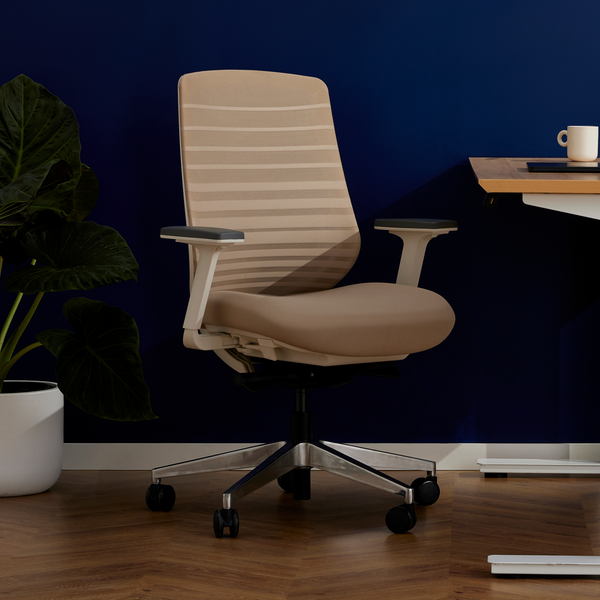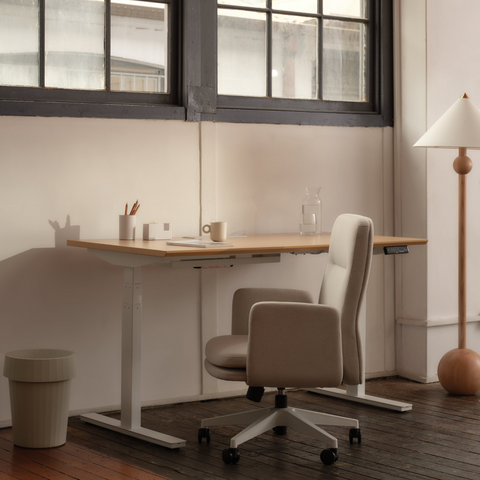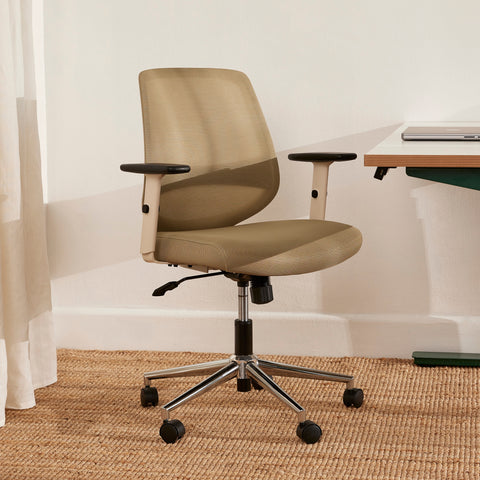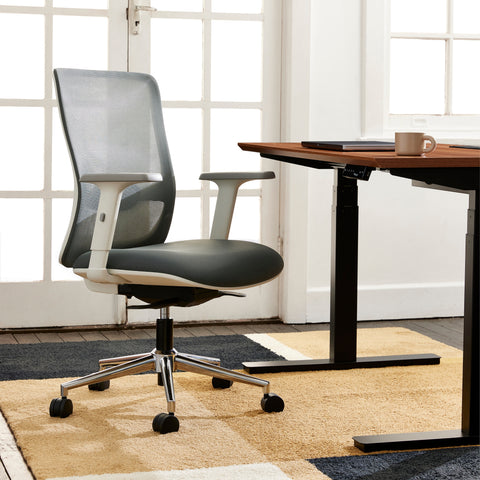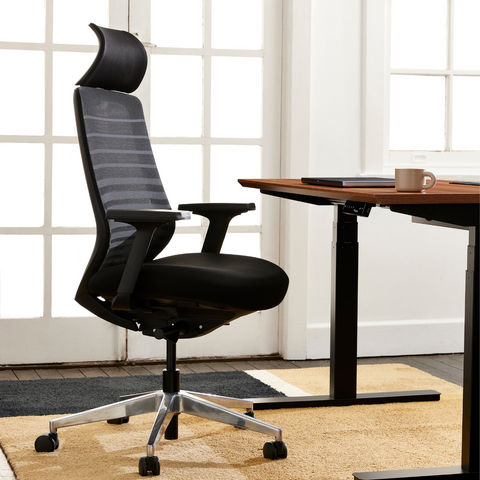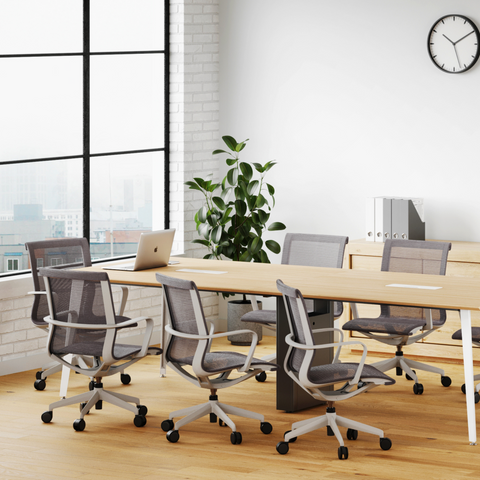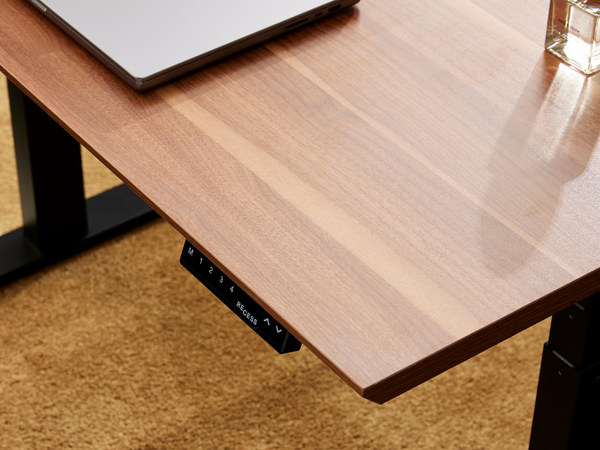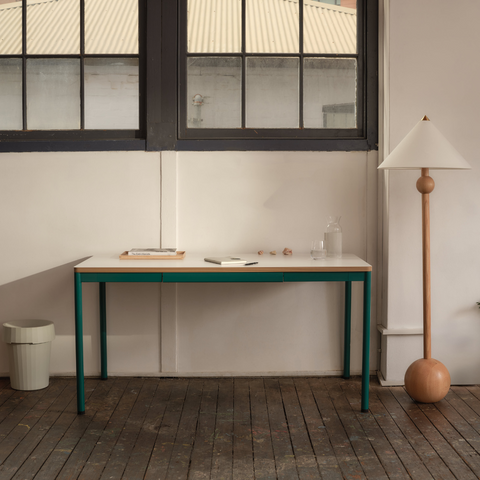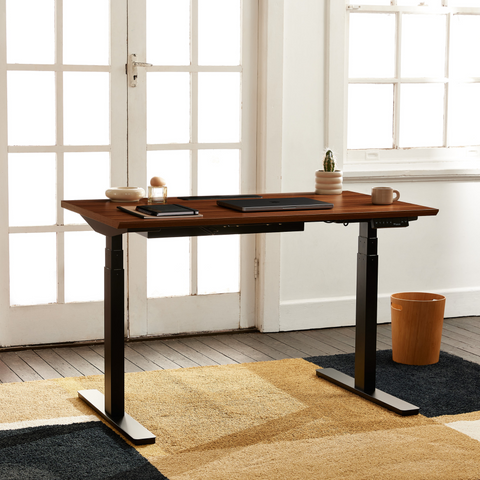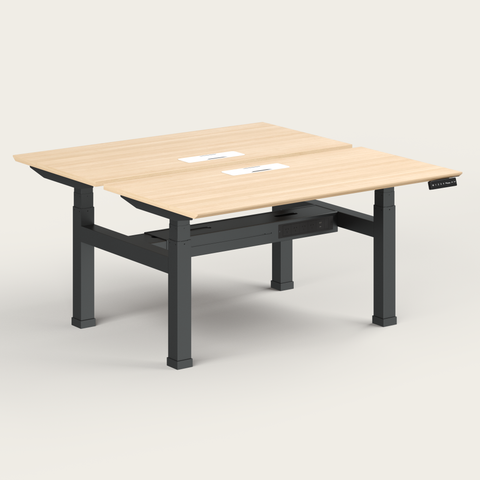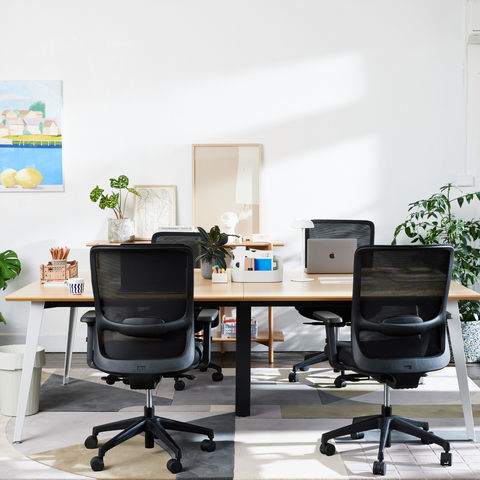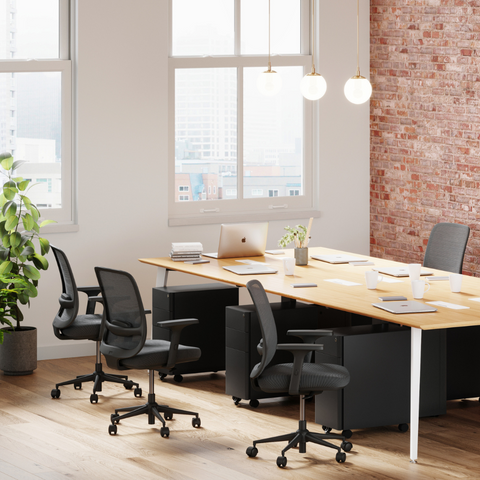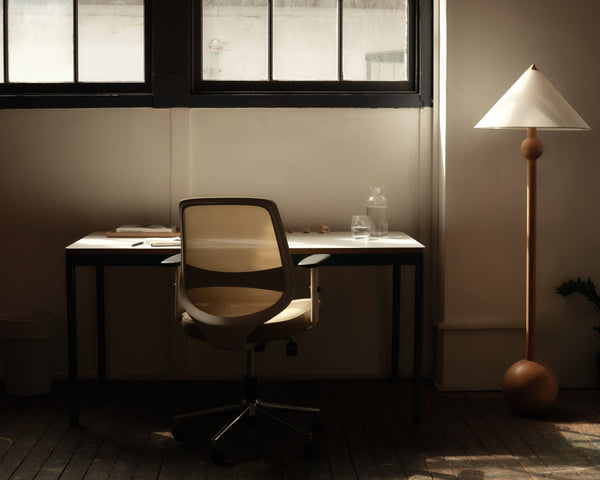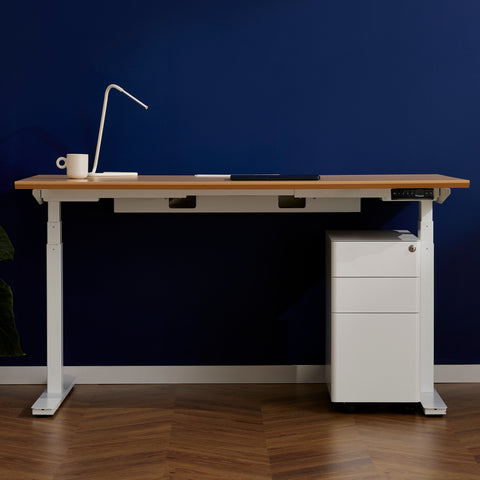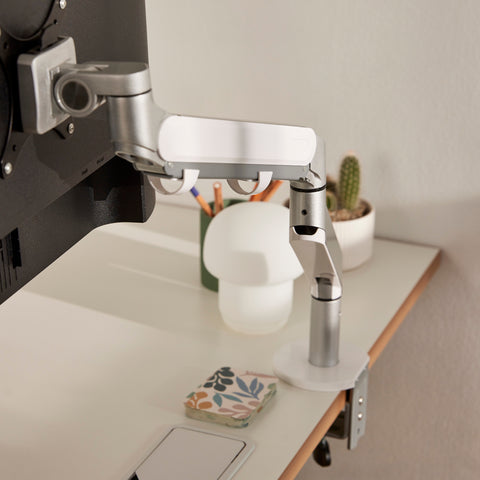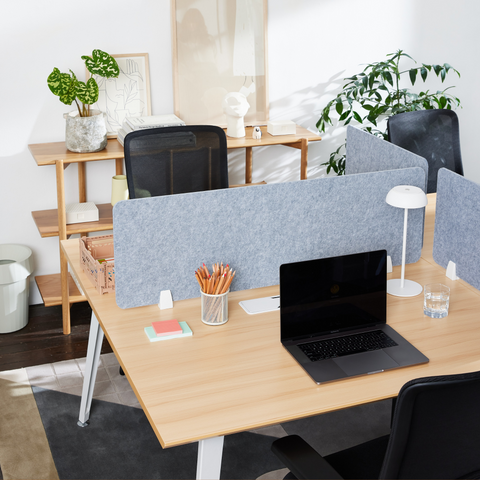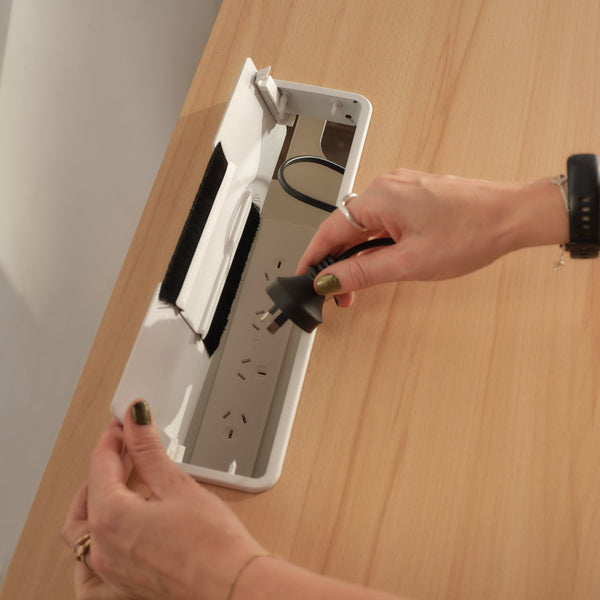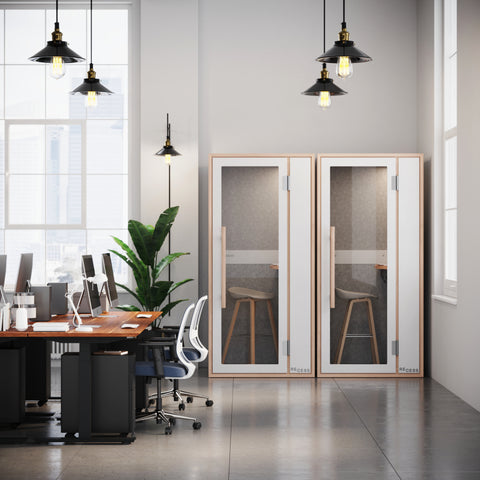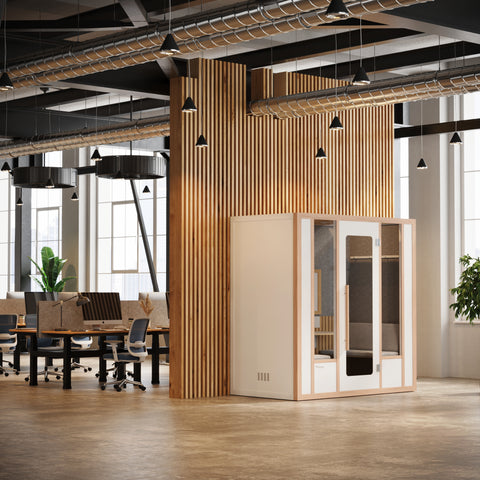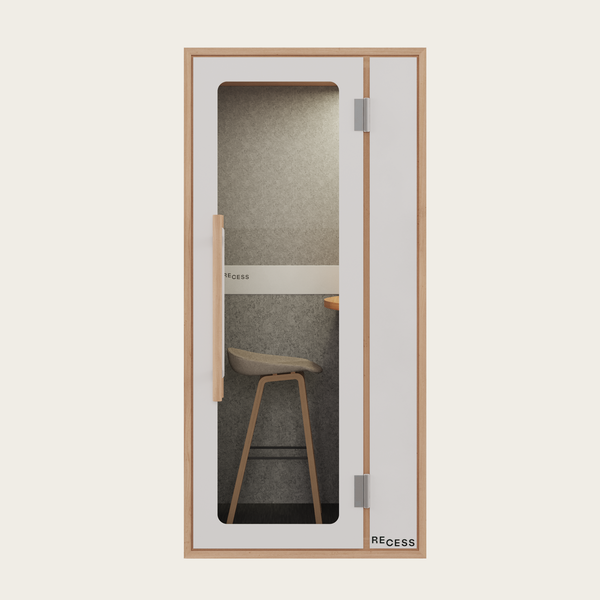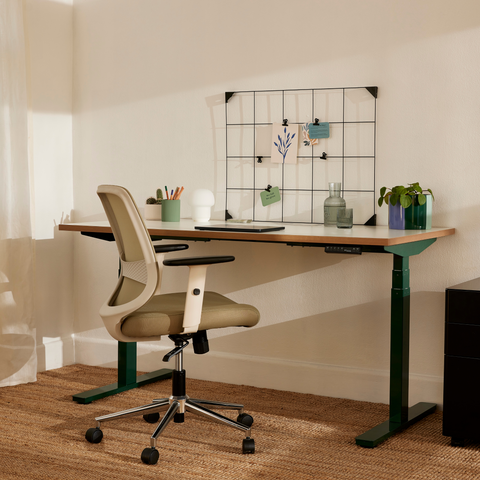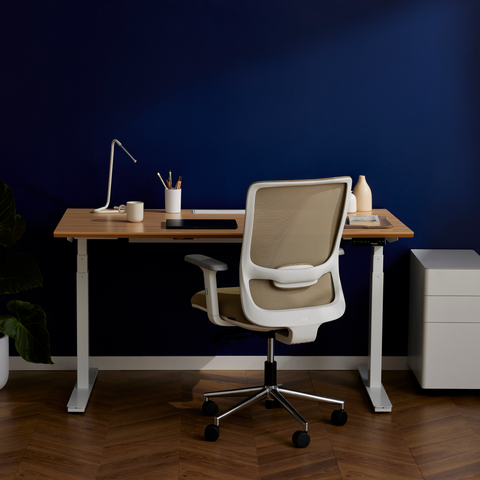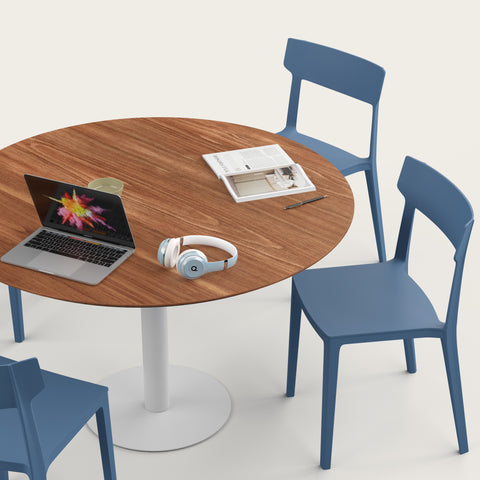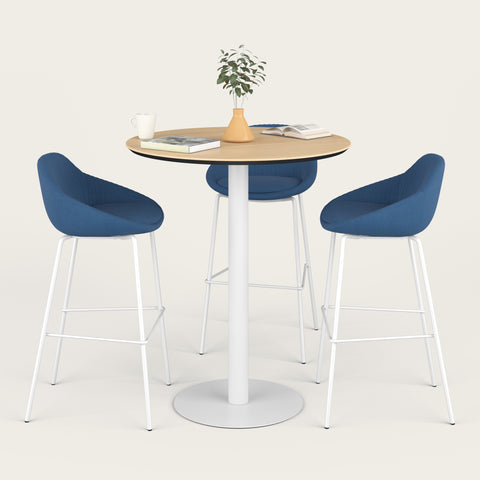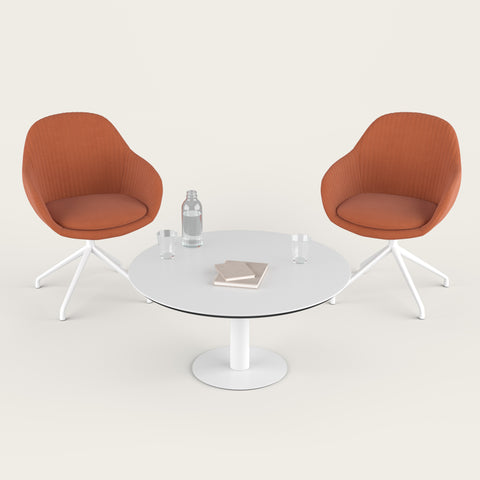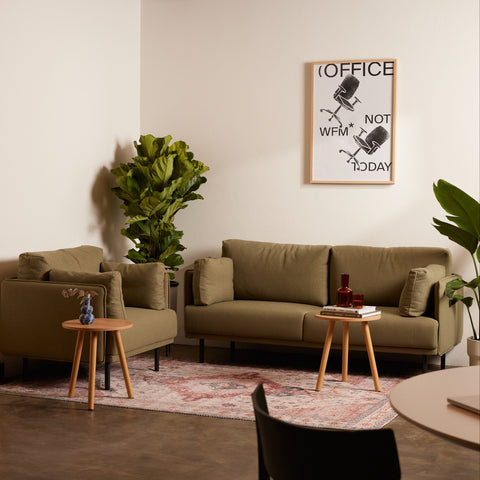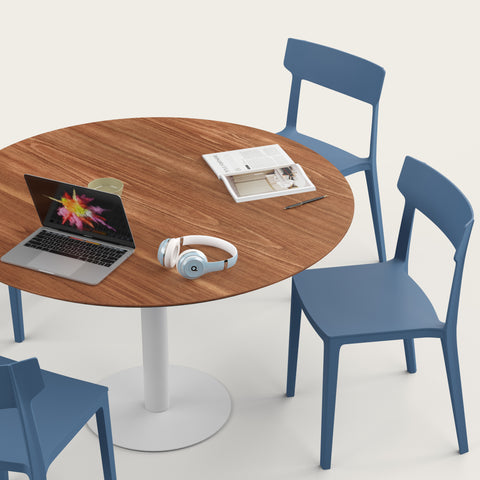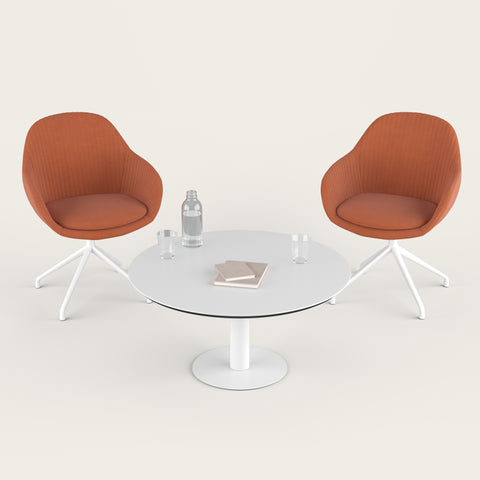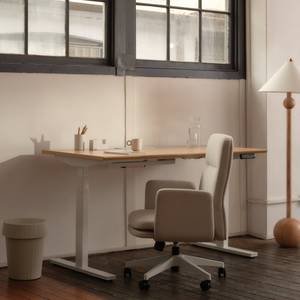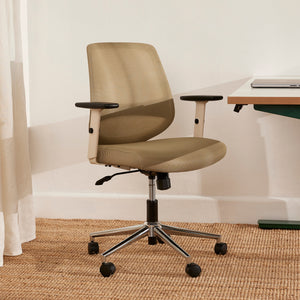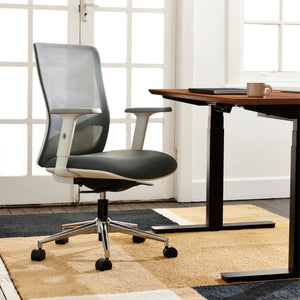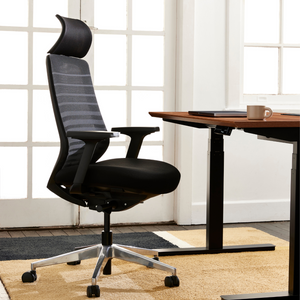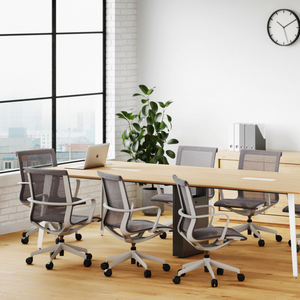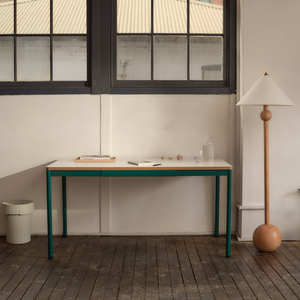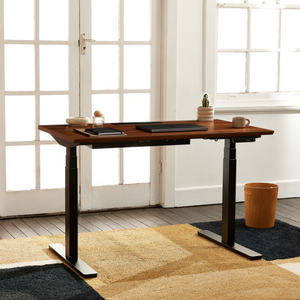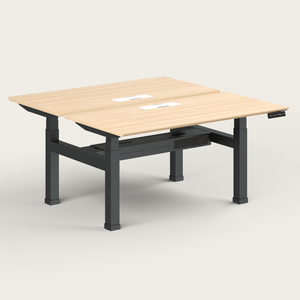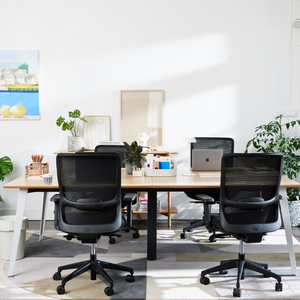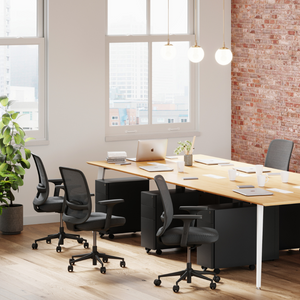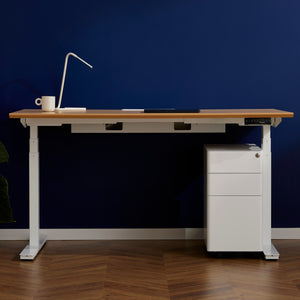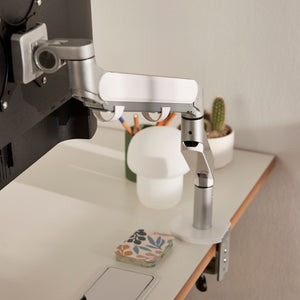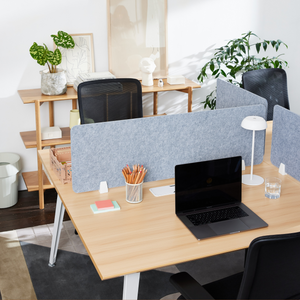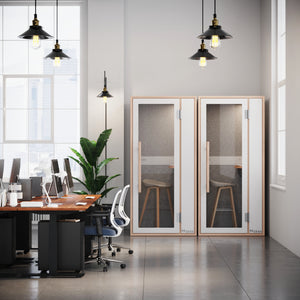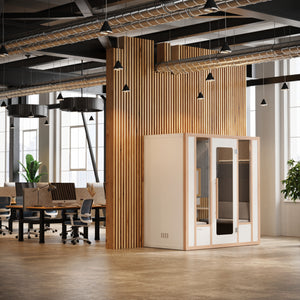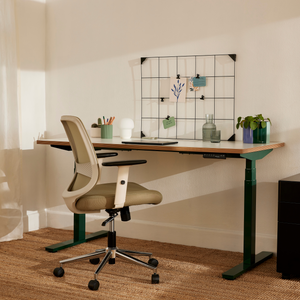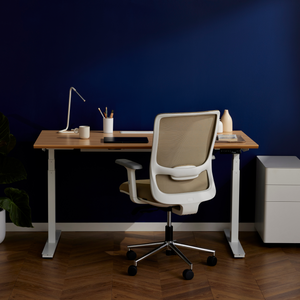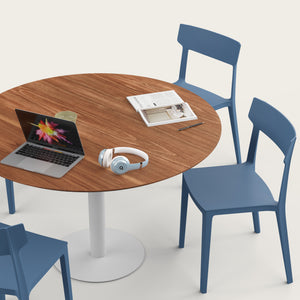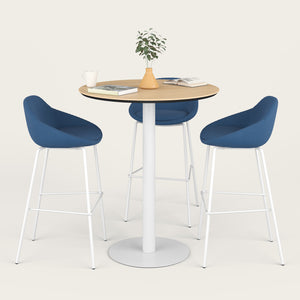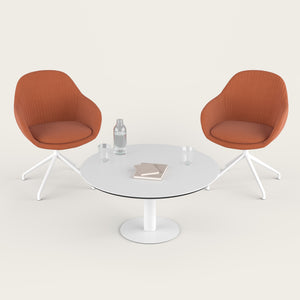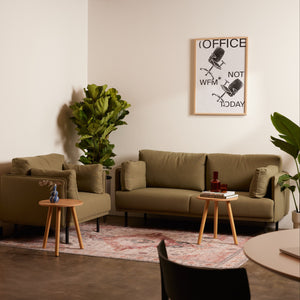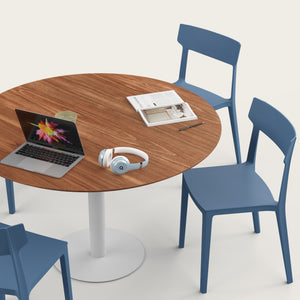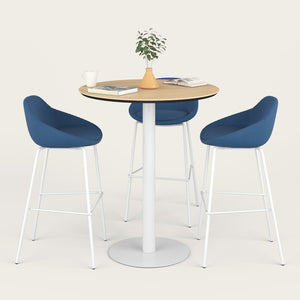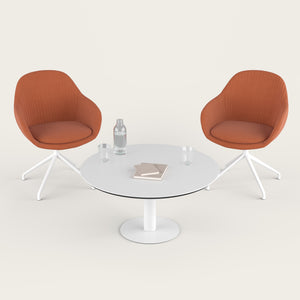If you’re curious whether sitting or standing at work is the healthier choice, you’re in the right place. Maybe you’ve started looking into a standing desk for your home office or perhaps your aching back is demanding you shake things up.
Whatever your situation, we’re here to help you discover how to optimise your productivity and energy levels when using a standing desk.
In 2025, the working landscape has changed dramatically as we ditch crowded office spaces for flexible, hybrid working. Now, employees are looking for more comfortable working environments, regardless of whether they’re coming into the office or not.
Have you recently added a stand-up desk to your office, or thinking about making the switch? Discover how to get the best experience possible and optimise your workday with a sit-stand desk.
What you need to know about sitting at work
There have been stacks of research into standing vs sitting at work, for a good reason. In Australia alone, back pain costs around $4.8 billion each year, with 25% of sufferers in the 18-55 age group shown to take 10 days or more off per year.
While sitting down for 7+ hours per day isn’t the only cause, being glued to our desks for extended periods of time is a big contributor to nasty aches and pains.
Unfortunately, there are plenty of negative health impacts that come along with habitual inactivity (a.k.a. sitting down for hours on end), including an increased risk of obesity, cardiovascular disease and even deep-vein thrombosis. In fact, a study conducted by Harvard Health shows that sitting for long periods of time not only impacts our short-term health but is even linked with premature mortality.
You’ve probably felt the impacts of long days stuck behind a seated desk. From tight hip flexors to an aching lower back, sitting in one position for too long can leave us feeling stiff and sore. Plus, these issues are compounded when we move straight from our desk to our couch for a night in front of the TV.
But there is a practical solution: investing in a Stand Up Desk. With the ability to change desk heights and stretch your legs, a standing desk offers greater flexibility and healthy movement throughout your day.
The benefits of standing at work
In the days before video calls and office jobs, standing was the norm. In fact, humans are designed to stand as our digestive system, heart and cardiovascular system work more effectively this way.
So it comes as no surprise that workers are looking for ways to integrate standing into their daily work routine.
Standing has been shown to offer a stack of powerful health benefits, with some of the most common including:
- Improve our metabolic function
- Strengthens leg muscles
- Improves balance and circulation in the legs to help reduce blood clots
- Supports good posture to reduce back pain
- Boost our energy levels to elevate our mood and improve focus
But is standing for hours on end a good idea?
This next part might come as a bit of a surprise.
Whilst standing throughout the day has health benefits, research shows standing for prolonged periods can actually have the opposite effect.
Standing for too many hours each day can lead to:
- Sore feet
- Swelling of the legs
- Varicose veins
- General muscular fatigue
- Low back pain
- Stiffness in the neck and shoulders
- Inflammation in joints
What’s the sweet spot when it comes to standing and sitting at work?
With all this talk about the health implications and dangers of sitting and standing, you might be wondering if it's possible to strike the perfect balance. The truth is that standing or sitting for extended periods of time isn’t ideal. Instead, you want to break up your day and change your body position to reduce soreness and boost your productivity.
A general rule of thumb is that you want to add regular movement and variety into your work day. That means standing for 5-15 minutes for every 30 minutes you sit.
A British Journal suggests that workers should stand and move for a total of 2 hours or more throughout an 8-hour work day. Even moving your body for 2-10 minutes, such as a brisk walk or light stretches, can help reverse the effects of sitting for long periods.
5 tips for getting the most out of your standing desk
Now that you’re ready to start implementing standing breaks throughout your day, here are some helpful tips to optimise your day and use your stand-up desk to its full potential.
- Choose an adjustable standing desk that allows you to find the perfect standing height.
- Find a desk that allows you to save your favourite heights for easy future use.
- Maintain good posture when standing (and make sure you’re not leaning or bending over).
- Ensure your screen and monitor are at eye level or above to stay focused.
- Step away from your desk at least once an hour and get the blood flowing with a short walk or gentle stretches.
How to design a productive workspace
Creating a flexible work environment will help you succeed throughout the day and maximise your productivity. Gone are the days of singular workspaces and staying in one place for long periods.
Instead, you’ll want to design an office that incorporates both standing and sitting options, so you get the best of both worlds and reduce the negative health impacts of long sedentary periods.
A productive workstation should have these 8 things:
- Screen at eye level (use a monitor arm to adjust the height to a comfortable level)
- Keyboard roughly at elbow height
- Spine straight with a natural curve
- Choosing an ergonomic chair that supports your back
- Shoulders back and relaxed
- Knees slightly bent to prevent locking knee joints
- Feet on a level surface with an anti-fatigue or padded mat
- No interference of cables or cords in and around your feet
Ready to create a flexible, healthy and adaptable work environment?
And that’s a wrap! Creating a productive and flexible work environment means you make the most out of your day-to-day schedule. Choosing a standing desk that gives you the freedom to stand and sit throughout the day.
Are you ready to build a beautiful hybrid office space that promotes work wellbeing and productivity? Recess takes the hard work out of furnishing your agile work environment, so you can focus on putting your best foot forward at work.
Discover our office furniture and score our Active Bundle (packed with everything your team needs to stay focused all day long).
